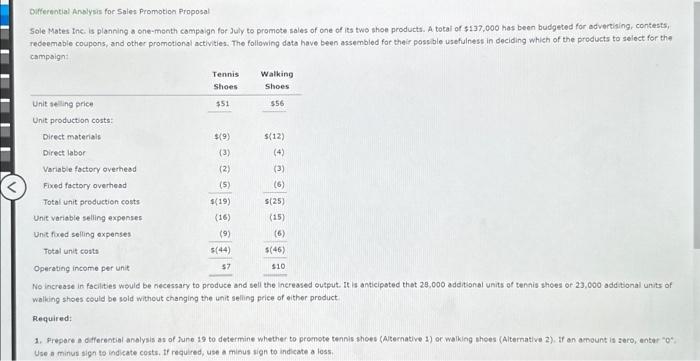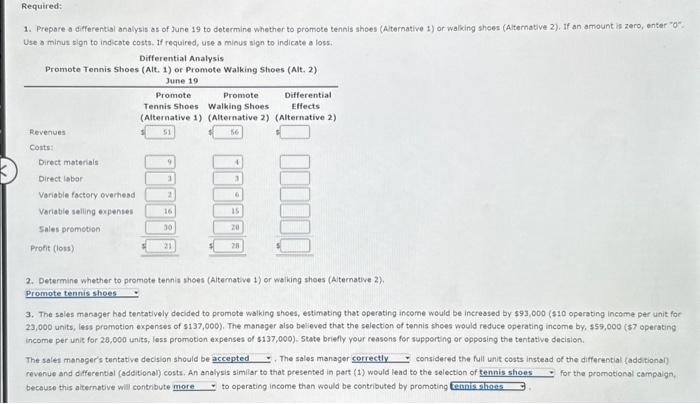Outfersitial Anblysis foe Sales Promotion Proposal Sole Mates inc. is planning a one-menth campaign for July to promote sales of one of its two shoe products. A tokal of \$137, 00o has been budgeted for advertising. contests, redeemable coupons, and other promotional activities. The following dota have been assembled for their poss ble usefulness in deciding which of the products to select for the campsignt No increase in facilites would be necessary to produce and sell the incressed oulput. It is anticipoted thet 28.000 additional units of tenais shoes of 23,000 additional units of walking shoes could be sold without changing the unit selling price of either product Required: 1. Prepere a differential analysis as of June 19 to determine whether to promote twnnis shoes (Aternative 1) or waiking thees (Alternative 2). If an arnount is zero, antar "O". Use a minus siga to indcate costs, tf required, use a minus sign to indicate a loss. 1. Prepore a differential analysis as of June 19 to determine whether to promote tennis shoes (Alternative 1 ) or walking shoes (Alternative 2). If an amount is zero, onter "O". Use a minus sign to ind icate costs. If required, use a mious sign to indicate a loss: Differential Analysis Promote Tennis Shoes (Alt. 1) or Promote Walking Shoes (Alt. 2) 2. Determine whether to promote tennis ahoes (Aitemative 1) or waliing shoes (Alternative 2). 3. The seles manager had tentatively decided to promote walking shoes, estimating that operating income would be increased by 593,000 ( 510 operating income per unit foe 23,000 units, iss promotion expenses of 5137,000). The maneger aiso believed that the zelection of tennis shoes would reduce operating income by, 559,000 (s7 operating income per unit for 26,000 units, less promotion expenses of $137,000 ). State briefly your reasons for supporting or opposing the tentative decision. The salet manoger's tentative decision should be The sales manager considered the full unit costs instead of the differential (additional] revenue and differential (addibional) costs. An analysis similis to that presented in port (1) would lead to the selection of for the promational sampaign, because this aiternative will contnbute to operatiog income then would be contributed by promoting








